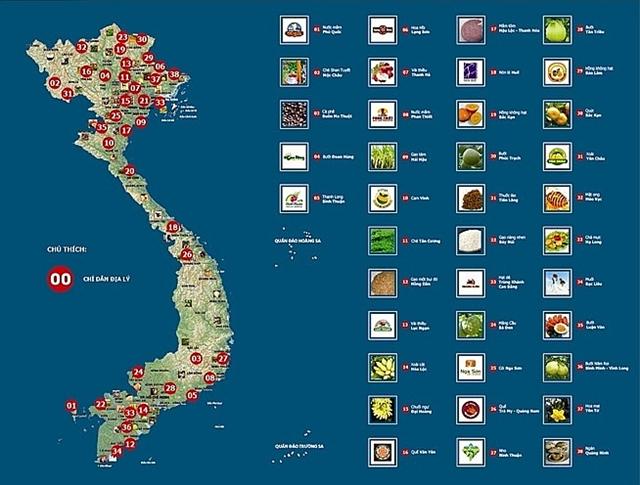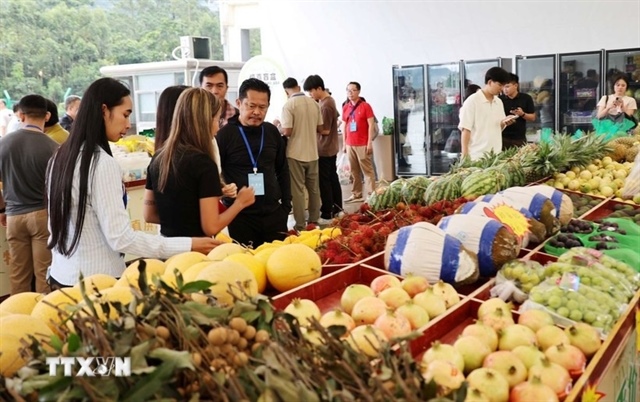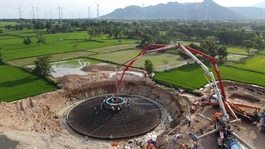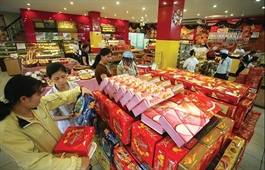Protecting Vietnamese agricultural brands in the United States through trademarks
Protecting Vietnamese agricultural brands in the United States through trademarks
Vietnam is the country famous for agricultural products, namely Phu Quoc for fish sauce, Buon Ma Thuot for coffee, Binh Thuan for dragon fruit, and Luc Ngan for lychees. Most of the agricultural brand names have collective characteristics as being originated from a particular geo-graphical location. From a legal perspective, most of these geographically-originated brand names have been registered in Vietnam in the form of geographical indication (GIs), collective trade-mark, or certification trademark.

Protecting Vietnamese agricultural brands in the United States through trademarks, illustration photo
|
The United States does not have any statutory provisions on protection of GIs. It justifies that it still complies with the TRIPs Agreement regarding member obligations with regard to protection of GIs by its granting them as a special type of mark, that is, a certification mark.
A certification mark is a type that is used by a person or entity other than the registrant to certify to purchasers that a particular product or service has met certain standards.
The purpose of the certification mark is to certify and not to indicate a source. Binh Thuan dragon fruit, bearing a certification mark under US Reg. No.4,061,583 for example, conveys a message that dragon fruit grown in that province has the specific geographical conditions as defined by the certifier, and such dragon fruit is planted, cared for, harvested, and preserved in accordance with Good Agricultural Practices, and conforms to standards of appearance, pulp, and nutritious ingredients as promulgated by the certifier.
A complete dossier for registration of a certification mark before the US Patent and Trademark Office (USPTO) comprises of 10 things. These include the legal name and physical address of the applicant; the applicant’s legal entity type; the applicant’s citizenship or the jurisdiction under whose laws the applicant is organised, and if the applicant is a domestic partnership or joint venture, the names and citizenship of the general partners or active members of the joint venture; a description of the mark if it is not in standard characters; a translation/transliteration of any foreign wording in the mark; a drawing of the mark sought to be registered; and a filing fee of $250-350 per class subject to a TEAS plus or standard application.
It also involves a filing basis, including verification of certain statements signed by the applicant or a person properly authorised to sign on behalf of the applicant; a statement specifying what the applicant is (or will be) certifying about the goods or services; a copy of the certification standards governing use of the certification mark on or in connection with the goods or services (required for Section 1(a) applicants only); and a statement that the applicant is not engaged (or will not engage) in the production or marketing of the goods or services to which the mark is applied, except to advertise or promote recognition of the certification programme or of the goods or services that meet the certification standards of the applicant.
A list of the particular goods or services on or in connection with which the applicant’s authorised users use or intend to use the mark is also required, as is classification in US Class A for goods or US Class B for services.
Vietnamese associations or cooperatives can choose one of two ways to apply for geographically originated agricultural brand names in the US. The first is to apply directly (also known as “national registration”) to the USPTO through a US law firm alleging a filing basis pursuant to each of Sections 1(a), 1(b), 44(e) and 44(d), or apply indirectly (also known as “international registration”) extending to the US territory by using the Madrid Protocol with Section 66(a) filing basis.
A certification mark filed with the USPTO shall be examined as if it is an ordinary mark; specifically the certification mark as filed shall be evaluated as to both absolute refusal grounds and relative refusal grounds. In 3-4 months, if the USPTO finds no grounds for refusal, it approves and publishes your certification trademark on the gazette for opposition purpose in a 30-day period of time.
Subject to which the filing basis was chosen, and in the absent of opposition, a certificate of trademark registration will be issued by the USPO approximately two months after the expiry of opposition time limit.
The US Trademark Act strictly regulates that the owner of any marks including certification mark registered with the USPTO must timely submit evidence of use in the form of Declaration of Use, otherwise the US registration will be cancelled. Such strict requirements may be summarised as below.
Firstly, between the fifth and sixth years after the registration date, a Section 8 declaration applicable for all trademarks registered under any of Sections 1(a), 1(b), 44(d) and 44(e), or a Section 71 declaration applicable for those registered under the Madrid Protocol-based international registration must be filed with the USPTO against a fee of $225 per class.
Secondly, between the ninth and 10th years after the registration date, a Section 8 declaration combined with a Section 9 renewal application must be submitted with the USPTO against a fee of Section 8 and 9 combined filing must be rendered against a fee of $525 per class.
Thirdly, for the Madrid Protocol-based international registration designating the US duly maintained with the above Section 71 declaration above, between the ninth and 10th years after the date of grant of US registration, you must both submit a Section 71 declaration with the USPTO, and a request for renewal of international registration with the World Intellectual Property Organization.


























